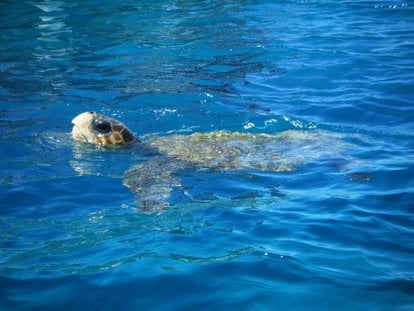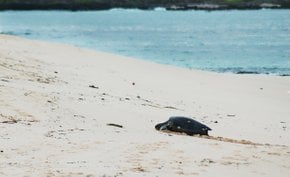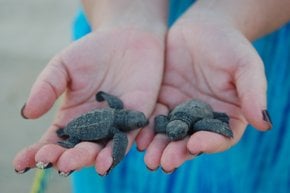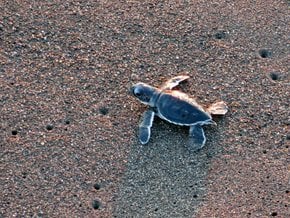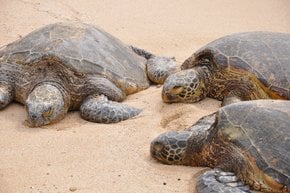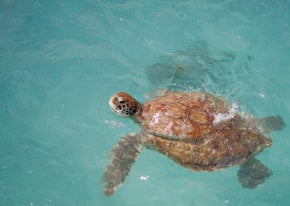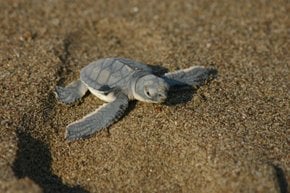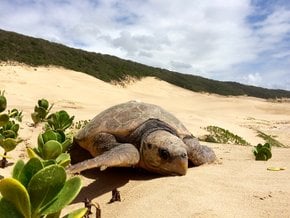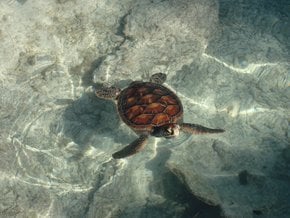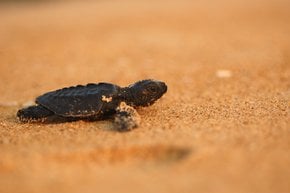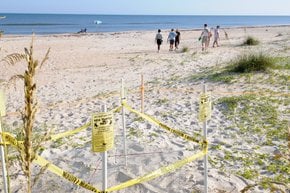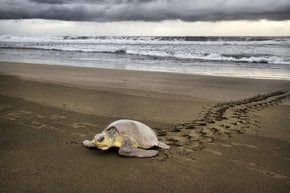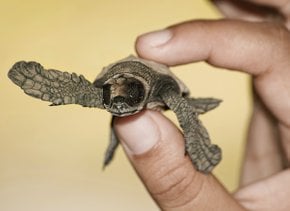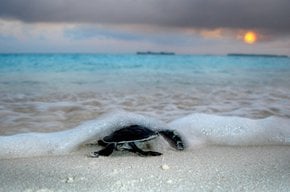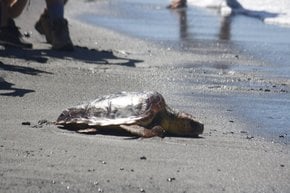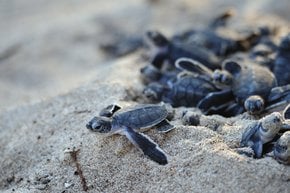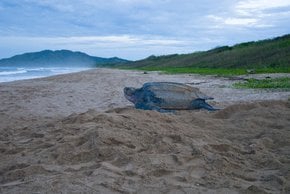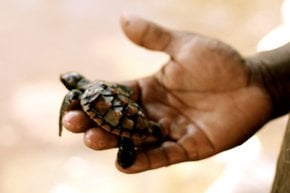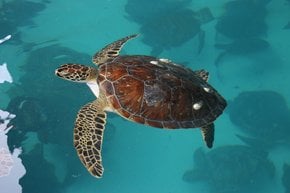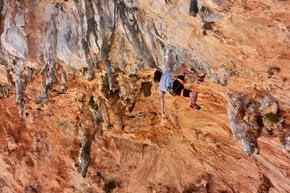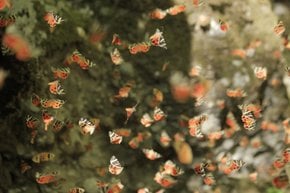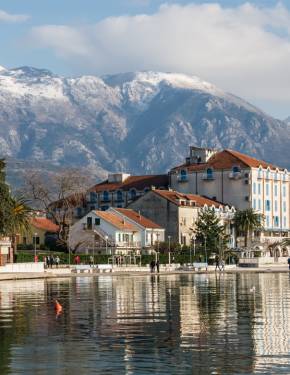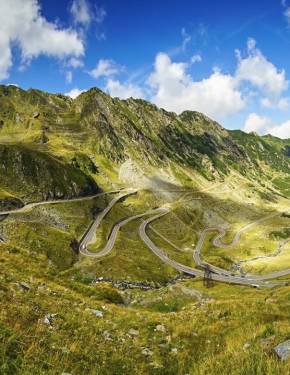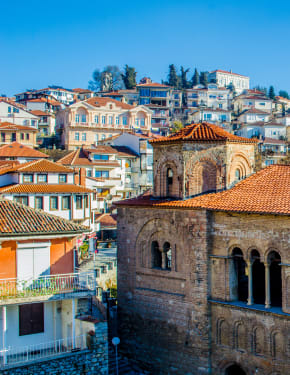Sea Turtles in Greece 2026
Visit some of the wonderful Greek beaches, which are home to the adorable Caretta turtles
Best time: late May–August
Greece offers sea turtle enthusiasts a unique opportunity to see these ancient marine creatures in their natural habitats, especially during their nesting and hatching seasons. This awe-inspiring experience also provides a chance to contribute to their conservation. With careful planning and respect for these incredible animals and their environments, your visit can be both enriching and impactful.
Sea Turtles in Greece
Sea turtles ( in Greek, “thalassia chelona”) are a significant part of Greece's natural heritage. Being exclusively marine reptiles, they only come ashore to lay their eggs. The region serves as a crucial habitat for these ancient mariners, with its warm coastal waters, sandy beaches, and rich marine ecosystems. These conditions are ideal for the nesting, foraging, and migration of several sea turtle species. Greece hosts three species of marine turtles: the Loggerhead sea turtle (Caretta caretta), the Green sea turtle (Chelonia mydas), and the Leatherback Turtle (Dermochelys coriacea). However, the Loggerhead is the most commonly seen species nesting on Greek beaches.
Loggerhead Sea Turtle (Caretta caretta)
The Caretta or Loggerhead Sea Turtle can measure up to one meter in length and weigh up to 90 kg. They prefer the soft, sandy beaches of these areas for laying their eggs. Each female may lay several clutches of eggs during a nesting season, with an incubation period of about 55 days. Once hatched, the tiny turtles make their way to the sea, guided by the natural light horizon over the ocean.
When do They Nest and Hatch
The nesting season for sea turtles in Greece spans from late May to August. During this period, female turtles come ashore primarily at night to lay their eggs. Hatchlings begin to emerge in late July, offering a fascinating natural spectacle as they make their way to the sea. Beach-goers are advised to follow guidelines such as avoiding beaches at night to give turtles space to nest and not interfering with the hatchlings as they journey to the ocean. Tourists should avoid disturbing the turtles by trying to lift them or carrying them to the sea, as their first journey is crucial for strengthening their bodies. Additionally, pouring water on the turtles can confuse them and should be avoided. It's important to note that only one in a thousand baby turtles survives after hatching.
Key Nesting Sites
Key nesting sites for the turtles are primarily located along the Ionian and Aegean coasts. Some of the most notable nesting beaches include Laganas Bay on the island of Zakynthos (Zante), Mounda Beach and Kaminia Beach of Kefalonia, and the beaches of Kyparissia Bay and Lakonikos Bay in Peloponnese.
Crete
In Crete, Loggerhead sea turtles are the primary nesting species. They lay their eggs on the northern beaches, with Rethymno and Chania being prominent nesting sites. Local conservation groups work diligently to protect these areas and ensure the safe passage of hatchlings to the ocean.
Rhodes
On the island of Rhodes, Loggerhead sea turtles find suitable nesting grounds, particularly on the isolated beaches. One such spot is Plimmiri, a remote beach in the southeast that stretches 2.8 miles (4.5 km) along the edge of a large bay. This serene spot, known for its distinctive black sand, is of significant ecological interest as it serves as one of the nesting grounds for sea turtles, which lay eggs on the dunes of the beach.
Kos
Kos hosts Loggerhead sea turtles on several beaches, particularly along the coast north of Kefalos. This area provides a tranquil and sparsely populated environment ideal for nesting.
Sea Turtle Spotting
Embarking on a journey to spot sea turtles while snorkeling in Greece is another captivating experience that combines the beauty of marine life with the thrill of exploration. Several coastal regions, including Zakynthos, Kefalonia, and Crete, offer excellent opportunities for encountering these majestic creatures in their natural habitat. With crystal-clear waters and abundant marine ecosystems, snorkelers can often observe Loggerhead and green sea turtles gracefully gliding through the underwater landscape, feeding on seagrass or exploring rocky reefs. Guided snorkeling tours and eco-friendly excursions provide the chance to learn about sea turtle conservation efforts while marveling at their serene presence beneath the waves.
Conservation Efforts
Sea turtles in Greece face numerous threats, including habitat destruction, pollution, climate change, and accidental capture in fishing gear. To combat these challenges, various conservation efforts have been put in place. Organizations like ARCHELON (the Sea Turtle Protection Society of Greece), the National Marine Park of Zakynthos, and the Mediterranean Association to Save the Sea Turtles rescue injured turtles, provide legal protection to key nesting sites, conduct extensive research, public awareness campaigns, and direct conservation actions.
Practical Tips for Observing Sea Turtles
When planning to observe sea turtles in Greece, follow local regulations and guidelines to avoid disturbing the turtles. Check the best times for nesting and hatching to maximize your chances of seeing turtles. Engage with local conservation programs, many of which offer opportunities to volunteer or participate in guided tours. Reduce your environmental footprint by minimizing plastic use and participating in beach clean-ups.

